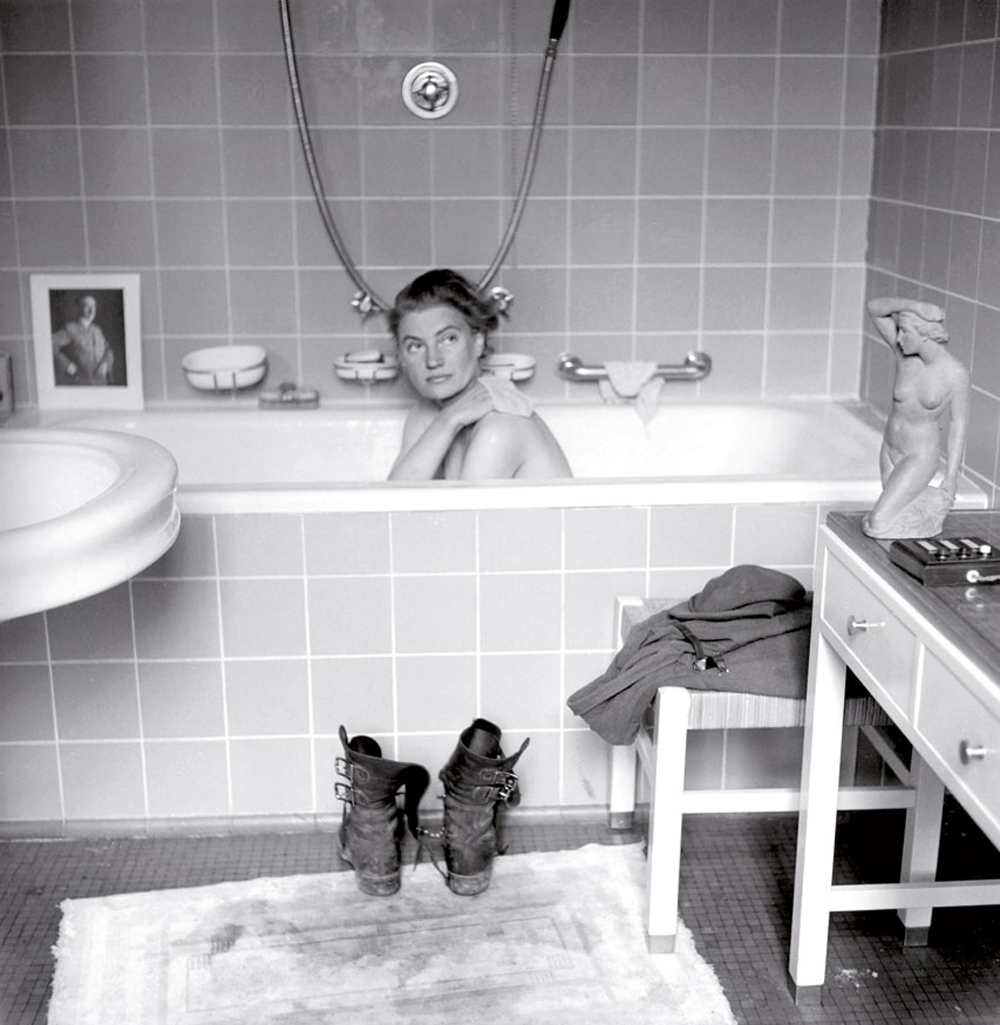
- Born 29 April 1945. Lee Miller and David E. The photographers Scherman entered Hitler's apartment. -I kept the address in my pocket for many years. In Hitler's bathroom, Miller took off his clothes and got into the bathtub. Scherman took a photograph with the boots at par, stained with mud from the Dachau concentration camp, which he had visited hours earlier. But I wouldn't be able to wash the clothes I'd seen. That night Miller slept in Hitler's bed in Munich's apartment. Adolf Hitler committed suicide the next day, in Berlin.

Elizabeth Miller was born in Poughkeepsie, New York, in 1907. At the age of 19, he was almost hit by a car on a street in the village of Manhattan. Condé Nast, editor of Vogue magazine, helped him avoid the accident and suddenly start his model career. The following year, on March 15, 1927, Lee Miller's face appeared on the cover of Vogue, drawn by George Lepape. For the editor-in-chief of Chase magazine, Edna Woolman, Miler represented the "modern girl" and was one of the most appreciated models in New York in the next two years.

Tired of his work as a model and with the desire to work on the other side of the chamber, in 1929 he left to Paris. Upon arriving at the artist's studio, Man Ray said to him, "I'm your new student." Man Ray did not have the habit of taking an apprentice, but soon Miller became his disciple, model, muse and lover. During his stay in Paris he met Pablo Picasso, Paul Éluard and Jean Cocteau, among others.
He returned to New York in 1932. There he installed a photographic study and from then on he combined the work orders with the surreal artistic projects.
The photographer was captured in London by World War II, and lived with his husband, Roland Penrose, also surreal. He photographed the London Blitz and, without heeding the concerns of his environment, he obtained accreditation as a Vogue War Correspondent. He photographed the liberation of Paris and the battle of Alsace, Saint Malo's first napalic attack and the concentration camps of Buchenwald and Dachau.
He died in 1977 in England, afflicted with cancer, at the age of 70, without completely overcoming the post-traumatic stress caused by his warmates.